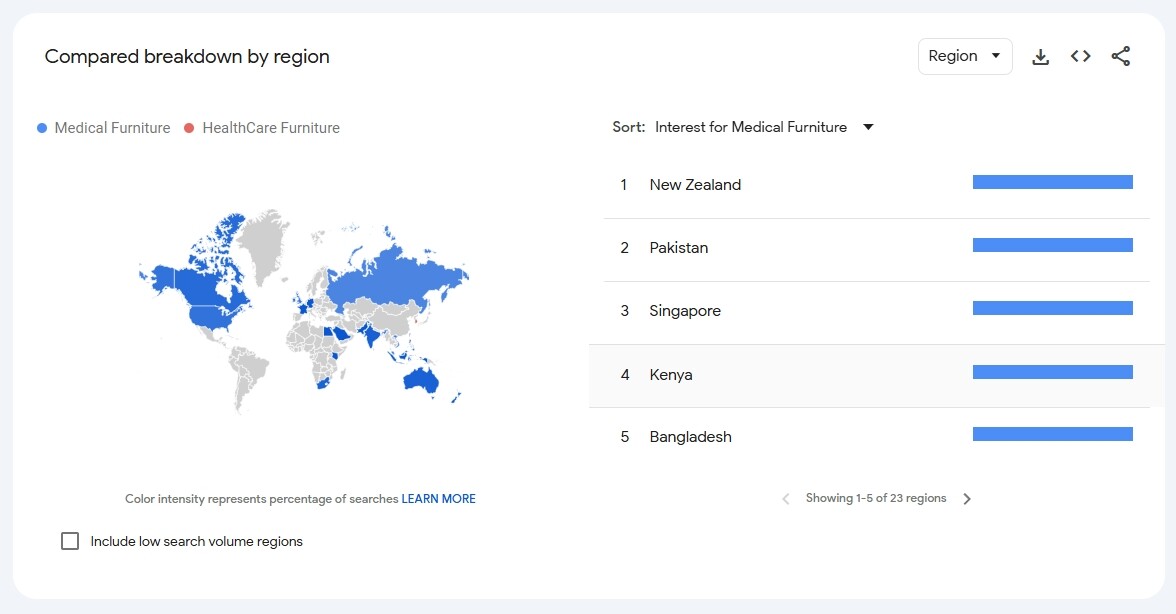Key points in HealthCare Furniture design

Designing healthcare furniture requires careful consideration of factors that cater to the needs of patients, caregivers, and healthcare professionals.
Here are the key points to consider in healthcare furniture design:
1. Ergonomics and Comfort
- Patient Comfort: Furniture should support the physical needs of patients, providing comfort for long periods of sitting or lying down.
- Staff Ergonomics: Designs should facilitate ease of use for healthcare staff, reducing strain and improving workflow efficiency.
2. Safety and Accessibility
- Ease of Access: Furniture should be accessible for all, including people with disabilities, elderly patients, and those with limited mobility.
- Safety Features: Rounded edges, sturdy construction, non-slip surfaces, and secure positioning mechanisms help prevent injuries.
3. Durability and Hygiene
- Materials: Use materials that are easy to clean, resistant to stains, and withstand regular use, such as antimicrobial surfaces.
- Maintenance: Furniture should be designed for easy maintenance, allowing for quick cleaning and disinfection to maintain hygiene standards.

4. Mobility and Flexibility
- Ease of Movement: Furniture should be lightweight or have wheels for easy repositioning and storage.
- Adjustability: Adjustable features (e.g., height, angle) enhance comfort and usability for different body types and conditions.
5. Aesthetics and Environment
- Calming Design: Use colors and designs that create a calming and welcoming environment, reducing patient stress and anxiety.
- Consistency: Furniture should fit cohesively within the overall design of the healthcare space, enhancing the aesthetic and functional flow.
6. Functionality and Efficiency
- Multi-Functionality: Furniture that serves multiple purposes (e.g., convertible chairs, storage-integrated beds) can save space and increase efficiency.
- Specialized Designs: Consider designs tailored for specific healthcare settings, such as patient rooms, waiting areas, or operating rooms.
7. Patient-Centered Design
- Personalization: Allow for personalization where possible, such as adjustable lighting or individual control of certain features.
- Privacy and Dignity: Design elements that provide patients with privacy, such as screens or modular partitions.
8. Compliance with Standards and Regulations
- Regulatory Compliance: Ensure furniture meets healthcare regulations and standards for safety, accessibility, and infection control.
- Sustainability Standards: Consider eco-friendly materials and sustainable manufacturing processes.
9. Technology Integration
- Modern Needs: Incorporate features like built-in power outlets, USB ports, and integration with medical devices or digital systems to support modern healthcare technologies.
10. Cost-Effectiveness
- Budget-Friendly:
Designs should balance cost with durability and quality, ensuring long-term value without compromising on essential features.
Focusing on these key points ensures that healthcare furniture contributes to a safe, efficient, and patient-centered environment.

Awesome! Share to:
Related News
 China's Healthcare Industry in 2024: New Opportunities and Challenges in the Hospital Furniture Market2024-09-19
China's Healthcare Industry in 2024: New Opportunities and Challenges in the Hospital Furniture Market2024-09-19 Global Development Trends in Medical Furniture2024-09-19
Global Development Trends in Medical Furniture2024-09-19 What are the furniture used in hospitals and what should be noted when purchasing2024-09-19
What are the furniture used in hospitals and what should be noted when purchasing2024-09-19 The overall process of building a new hospital project2024-09-19
The overall process of building a new hospital project2024-09-19 The Importance of Medical Furniture Procurement in the Construction of New Hospitals2024-09-19
The Importance of Medical Furniture Procurement in the Construction of New Hospitals2024-09-19 Key points of furniture configuration design in new hospital projects2024-09-19
Key points of furniture configuration design in new hospital projects2024-09-19 Hospital Construction and Management Exhibition2024-09-19
Hospital Construction and Management Exhibition2024-09-19 Laboratory furniture is designed to lab environment2024-09-19
Laboratory furniture is designed to lab environment2024-09-19

ISO9001, ISO14001, TUV, CE, etc, more than 40 national patents
10+ people teams offer differentdesign
1year warranty, free spare board and hardware for replace







